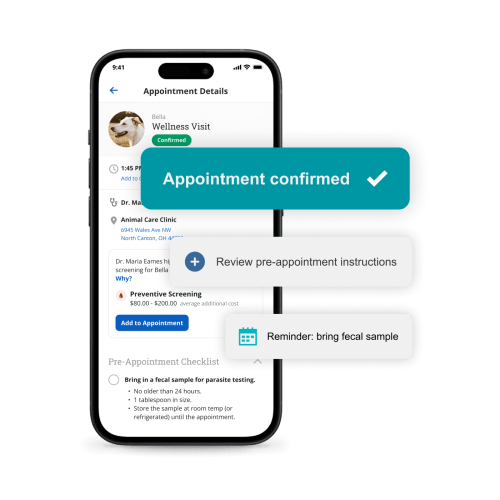5 Ways Veterinary Team Development Impacts Efficiency

5 Ways Veterinary Team Development Impacts Efficiency
Continuing education is required for credentialed and licensed team members, but education and training are more than simply checking a box. Veterinary team development can increase individuals' confidence and career satisfaction while improving hospital efficiency and clinical outcomes.
Ongoing training and development also empower team members to refine and grow their skill sets, simultaneously developing the hospital. Here are five top benefits of investing in veterinary team development.
1. Boost team confidence
Teams allowed to keep up with the latest updates in veterinary medicine can practice more confident decision-making and patient care. Continuing education and training boosts clinical competency and can help with soft skills, too. The more informed your team, the more easily they can build a collaborative and progressive culture.
Confident, educated team members can carry out tasks more efficiently because they spend less time second-guessing and more time with patients and clients. Team development builds overall competency, which reduces errors, minimizes delays, and improves patient outcomes.
2. Build specialized skills
Everyone in the clinic—including clients and pets—can benefit when team members undergo advanced training in a specialized area. The team member explores a topic that interests them and expands their career possibilities, the hospital benefits from the new services offered and the additional revenue, and pets benefit from specialized expertise—in some cases, minimizing the need for referral.
Specialized training of select veterinarians and technicians can also improve efficiency because allocating those tasks to the trained team members frees up others for general patient care. Additionally, team members who feel supported in their efforts to advance can experience greater job fulfillment and will more likely remain with the practice long-term.
3. Enhance client communication
Despite client communication playing a central role in every practice, many veterinary professionals find it challenging. Explaining complex diagnoses, communicating service value, delivering bad news, or handling upset clients is an acquired skill, but all veterinary team members can learn the strategies and knowledge to connect with clients and relay crucial pet health information effectively through continuing education (CE).
Team members who know how to steer a conversation, answer questions concisely, and defuse potentially stressful interactions can spend less time in exam rooms or on the phone having to clear up confusion about a pet’s condition or recommendations. Additionally, CE courses provided through practice management software can ensure team members understand how to leverage built-in communication tools and platforms and improve efficiency.
4. Encourage technology use
With the growing role of technology in veterinary practices, continuing education and training have become essential to optimize their use. Provide comprehensive training for all team members using technology each time your practice adopts a new application or platform to ensure you maximize the investment.
Veterinary professionals can also seek continuing education regarding technology in general and its use to the practice’s advantage. AI is a current major topic of interest, and you need someone on your team who understands it. Practices can use standalone or integrated AI tools to help craft medical note templates, newsletters, emails, educational materials, and anything else your team would like to spend less time doing.
5. Create a learning-focused culture
Veterinary team development through continuing education improves individual skills and promotes a culture of learning and collaboration. Team members returning from a conference or event should be encouraged to share their newfound knowledge, so the whole team can benefit. Growing and learning together promotes a supportive, cohesive environment where individuals are motivated to contribute to practice success.
Staff members who feel supported in their personal and professional growth likely feel connected to the practice, which helps reduce turnover rates and ensures a stable, well-trained team. Lower turnover translates to fewer disruptions and long-term improvements in hospital efficiency.
Investment in training and development helps bond veterinary team members to the practice, improves clinical outcomes, enhances clinic offerings, and elevates the client experience. Ensuring team members are equipped with the tools to build long-lasting veterinary careers benefits the individual, the practice, and the entire profession. Adopt a culture of ongoing learning and collaboration and see the lasting effects on team efficiency and fulfillment and overall practice success.




